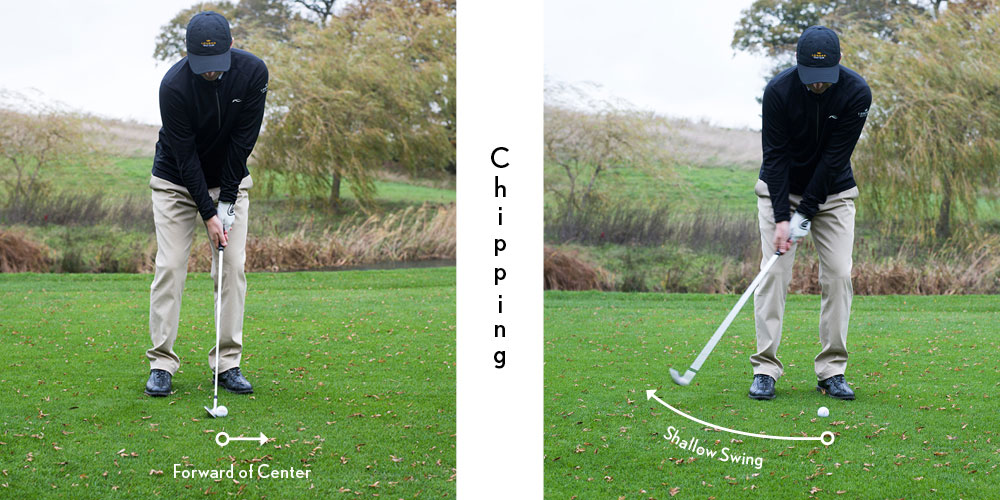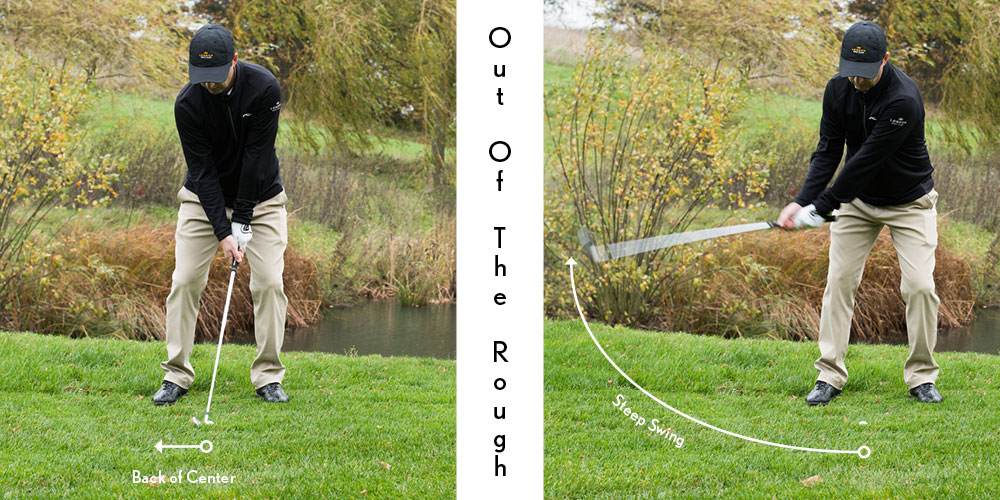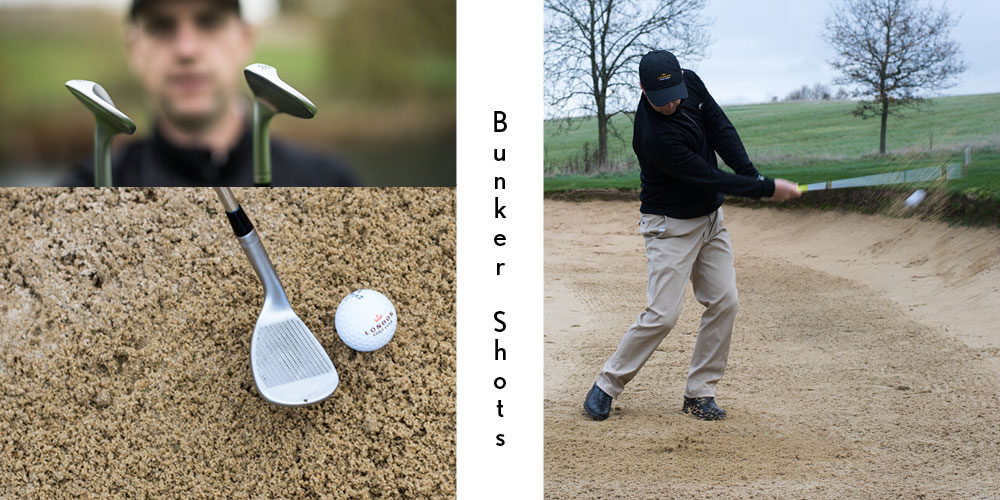
Paul Stuart
Paul Stuart is a one-club man. He joined London Golf Club just after it opened in 1994 as a caddie, just looking for some summer work, and 21 years later he is director of golf, a position he has held for five years. An England international as an amateur who partnered with Luke Donald, Stuart oversees 36 holes of championship golf at London Golf Club in north Kent, just outside southeast London. London Golf Club is a member of the European Tour Properties stable, and the club has served as venue for the European Open and most recently for the 2014 Volvo World Match Play Championship.
Chipping
Club selection: In firm conditions, you might opt for a sand wedge for chipping, with a lot of loft to help generate some backspin, but in wet conditions you don’t need backspin so a pitching wedge or 9-iron might work better. By opting for less loft you will bring more power to the shot to help run the ball up to the pin over wet and slow turf.
Setup: When the ground is firm you can chip with the ball in the middle or towards the back of your stance, but in wet conditions position the ball just forward of center in your stance.
Shallow swing: In the summer you might use a wristy, steep backswing to come down hard on the back of the ball, but in winter keep the wrists more static, with less hinge, and employ a shallower takeaway. This will encourage a lower, more penetrating ball flight to reach the pin in slower conditions.

Out of the Rough
Club selection: When the rough is damp, striking the ball as cleanly as possible is the priority. Any grass or water between the clubface and the ball is going to soften impact and reduce ball speed and shot distance. When playing a full iron shot, play up one club to give your shot more power through a thick lie.
Setup: Move the ball back in your stance slightly and choke down to the bottom of the grip, to encourage a steeper swing.
Steep swing: As opposed to the shallow chipping technique (on previous page), here you want to hinge the wrists for a steep backswing, and then come down hard on the back of the ball. This will minimize interference from the wet grass between the clubface and the ball to promote that clean strike.

Bunker Shots
Club selection: A typical sand iron offers more bounce than a lob wedge, and in wet and heavy sand there is a risk the bounce of the sand iron will skid over the sand so the club’s leading edge strikes the ball halfway up. This thin connection might leave the ball in the bunker or even over the green altogether. It’s a lottery either way. For wet sand, opt for a lob wedge and less bounce to reduce the chance of hitting the ball thin.
Take less sand: Take a regular setup and concentrate on striking the sand no more than an inch before the ball, as opposed to an inch and a half in dry conditions. Apart from that, concentrate on your normal swing and make sure you follow through.


Follow Us On


| Cookie | Duration | Description |
|---|---|---|
| cookielawinfo-checkbox-analytics | 11 months | This cookie is set by GDPR Cookie Consent plugin. The cookie is used to store the user consent for the cookies in the category "Analytics". |
| cookielawinfo-checkbox-functional | 11 months | The cookie is set by GDPR cookie consent to record the user consent for the cookies in the category "Functional". |
| cookielawinfo-checkbox-necessary | 11 months | This cookie is set by GDPR Cookie Consent plugin. The cookies is used to store the user consent for the cookies in the category "Necessary". |
| cookielawinfo-checkbox-others | 11 months | This cookie is set by GDPR Cookie Consent plugin. The cookie is used to store the user consent for the cookies in the category "Other. |
| cookielawinfo-checkbox-performance | 11 months | This cookie is set by GDPR Cookie Consent plugin. The cookie is used to store the user consent for the cookies in the category "Performance". |
| viewed_cookie_policy | 11 months | The cookie is set by the GDPR Cookie Consent plugin and is used to store whether or not user has consented to the use of cookies. It does not store any personal data. |